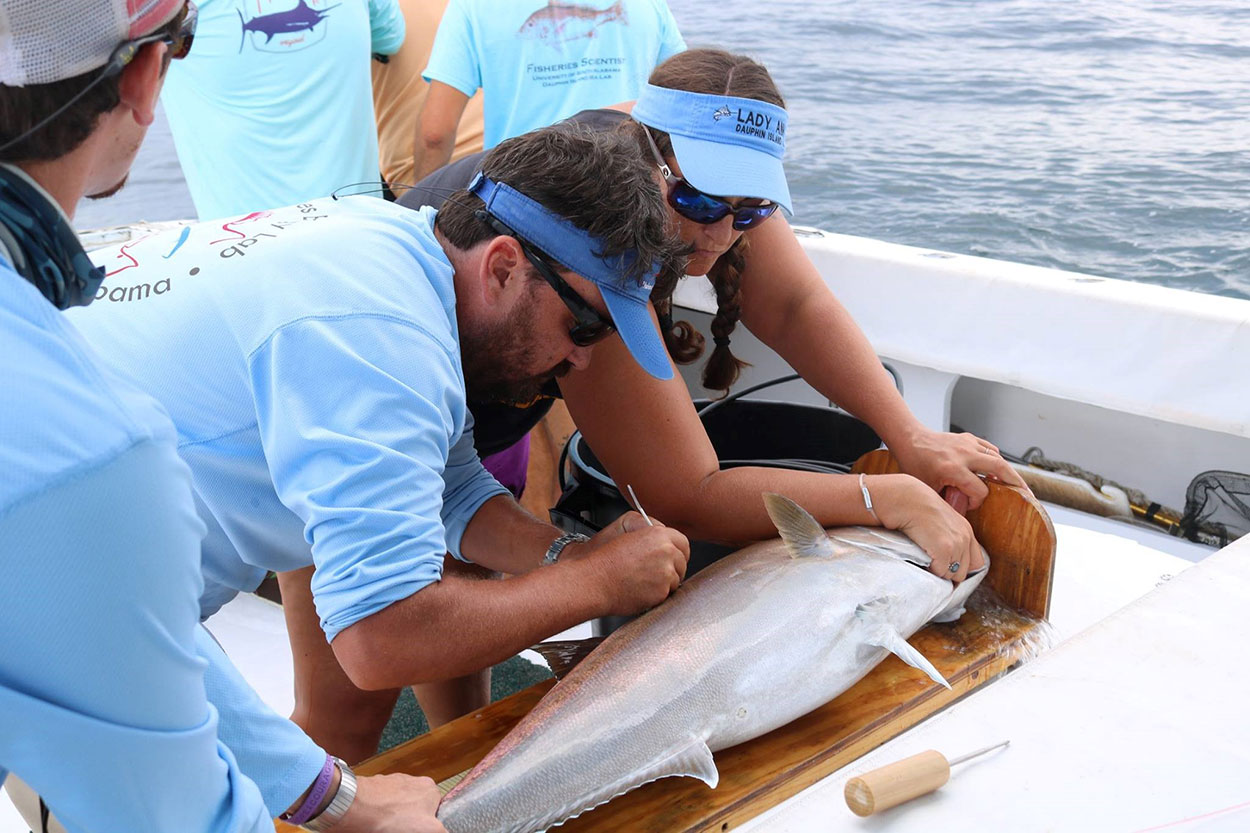Greater Amberjack Acoustic Tagging
Project Leader:Sean P. Powers, Ph.D., Principal Investigator
Project Details
Greater amberjack (Seriola dumerili) discard mortality in the Gulf of Mexico recreational hook-and-line fishery and the efficacy of descender devices in discard mortality reduction
Project lead:
Sean P. Powers, Ph.D., Principal Investigator Post-doctoral researcher: Kelly S. Boyle Collaborator: Erin Bohaboy, University of Florida
Background:
Greater amberjack are considered overfished in the Gulf of Mexico and recreational fishing results in a high rate of regulatory discard because of closed periods and length restrictions (SEDAR 2014). This species is targeted mainly by the recreational fishery (SEDAR 2014) and estimates of survival following discard are necessary for stock assessment. Most efforts to estimate discard mortality are based on initial observations of survival when fish are released. A recent study (Jackson et al. 2018) indicates the promising potential of acoustic telemetry to examine longer-term survival and behavior of released fish.
Objective(s):
The objectives of the greater amberjack project are to (1) estimate recreational discard mortality as a function of depth of capture, fish length, season, fight time, handling time and fish condition, (2) determine the contribution of predation to discard mortality, and (3) evaluate the efficacy of descender devices in ameliorating pressure-related fishing trauma and reducing discard mortality.

Fisheries Ecology Lab members attach external tag on a greater amberjack (Seriola dumerili)
Approach:
To accomplish these objectives, we are using acoustic telemetry with multi-sensor (depth and accelerometry) acoustic transmitter tags (Vemco©). These tags allow us to infer the post-release fate of fish from behavior: alive, dead from predation, dead, or emigration from the reef. We are attaching transmitters to dorsal external tags (Figure 1) so that we avoid interfering with potential barotrauma effects to the swim bladder with surgical tag implantation. Fish will be tagged across a range of depths (30-60 m) so that we can test for potential depth and pressure-related impacts on discard mortality. In addition, half of tagged fish will be released with a Seaqualizer© to determine if descending devices mitigate discard mortality in greater amberjack. Additional fish will be tagged with external tags to estimate discard mortality from traditional mark re-capture methods.
Results to Date:
In August 2018, 12 acoustic receivers were deployed on artificial reefs from 30 – 55m in depth. Twenty-three fish were tagged with acoustic transmitters and external tags. Recovery of acoustic telemetry data is planned for fall 2018 and additional fish will be tagged in early 2019. Data from this study will be used to build on the results of Jackson et al. (2018) and to improve estimates of discard mortality on this species in the Gulf of Mexico.

Funding Source(s): NOAA MARFIN